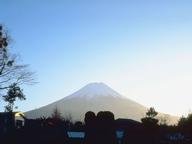Quiz Answer Key and Fun Facts
1. Which of the following countries has the most volcanoes?
2. Is it possible for people to live within a volcano's caldera?
3. What does "dormant" mean when used to refer to a volcano?
4. Historically, the largest known volcanic explosion is which of the following?
5. The deadliest volcanoes tend to occur in the presence of this geologic phenomenon.
6. This is the scale used to measure the size of volcanic eruptions.
7. A pyroclastic flow is the same as a nuee ardente.
8. Which volcanic term is INCORRECTLY matched with its synonym?
9. If you lived on Earth during the past two millennia and died as a result of volcanic activity, statistically this was the most likely cause of your death.
10. Which of the following is NOT a benefit of volcanic activity?
Source: Author
LilahDeDah
This quiz was reviewed by FunTrivia editor
crisw before going online.
Any errors found in FunTrivia content are routinely corrected through our feedback system.

